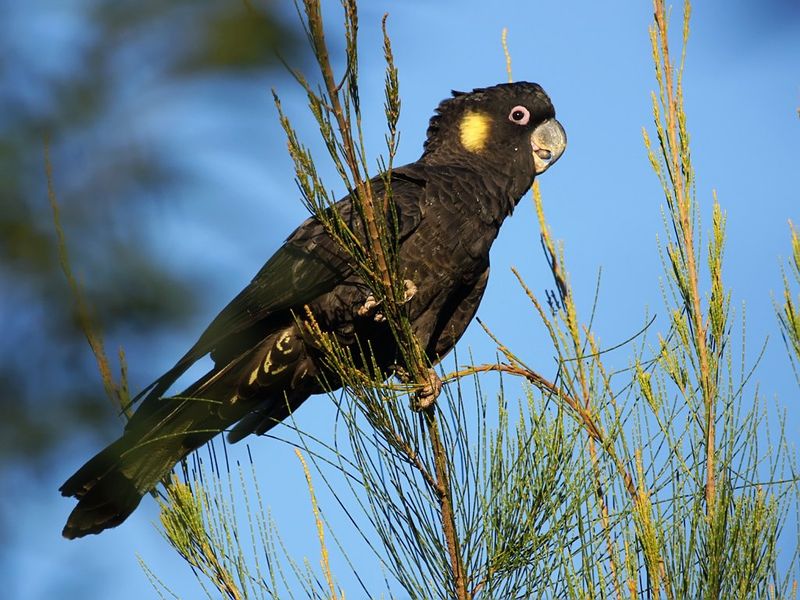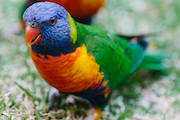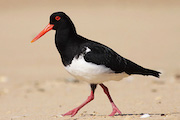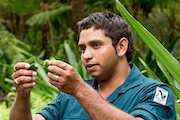Yellow-tailed black cockatoo
This big black bird is the largest of Australia’s parrots and grows up to an impressive 65 centimetres. It features black feathers contrasting with a distinctive yellow spot on the cheek and bright yellow under-feathers on a long tail.

Where
You will most likely spot these cockatoos in Booderee’s cleared woodland areas such as Green Patch camping and picnic areas. These birds are mostly seen in large groups, sometimes in excess of 50 birds in winter, flying overhead. Keep an eye out around Ryan’s Swamp as they love to munch on she-oak pods.
Listen for their slow wing beats and look out for them flying overhead. Note the long tails, blunt heads and wailing call - frequent calling while flying in small flocks helps them maintain contact.
Feeding
Yellow-tailed cockatoos feed in noisy flocks in eucalypts, devouring tree-boring grubs, or on lower seedbearing plants such as banksias. Sometimes the best way to find them is by looking for twigs and chewed seed pods falling from the trees in forested areas.
Breeding
These cockatoos have a long breeding season. They find large tree hollows to nest in and produce one to two eggs per breeding pair. The female incubates the eggs, while the male supplies her with food. Usually only one chick survives, and this will stay in the care of its parents for about six months.
Sounds
The usual call is an eerie high-pitched wailing contact call, kee-ow … kee-ow … kee-ow.
Stay in touch
Subscribe to receive important updates about Booderee National Park.




